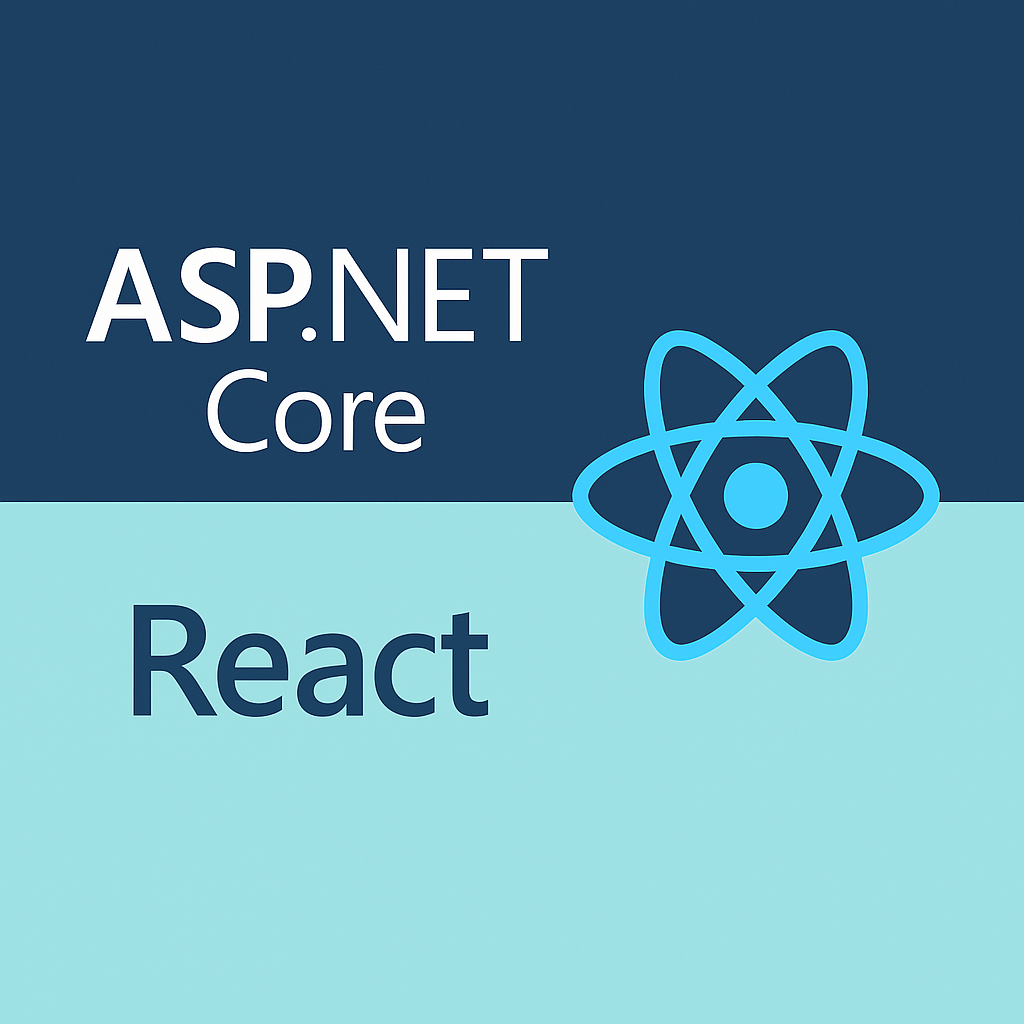ASP.NET and React are a powerful combination for building modern, scalable, and high-performance full-stack web applications. In this guide, we’ll walk through the step-by-step process of developing a full-stack web app using ASP.NET Core for the backend and React for the frontend.
Why Choose ASP.NET and React?
✅ Scalability: ASP.NET handles high-performance server-side operations, while React ensures a dynamic frontend.
✅ Separation of Concerns: Clear distinction between backend (API) and frontend (UI).
✅ Security & Performance: ASP.NET Core provides built-in security features, and React ensures fast rendering with Virtual DOM.
✅ Cross-Platform Development: Develop and deploy apps on Windows, macOS, and Linux.
1. Setting Up the Development Environment
Install Required Tools
- Visual Studio 2022 (for ASP.NET development) or VS Code
- .NET SDK (latest version)
- Node.js (LTS version)
- Postman or Swagger (for API testing)
Create an ASP.NET Core Web API Project
- Open Visual Studio and select Create a new project.
- Choose ASP.NET Core Web API and click Next.
- Configure the project name and click Create.
- Select .NET 7+ and click Create.
- Run the default project to verify it works using
dotnet run.
2. Setting Up the Backend (ASP.NET Core API)
Create a Model and Database Context
In the Models folder, create a class for your data structure. Example:
public class Product
{
public int Id { get; set; }
public string Name { get; set; }
public decimal Price { get; set; }
}
Now, create a Database Context in Data/ApplicationDbContext.cs:
using Microsoft.EntityFrameworkCore;
public class ApplicationDbContext : DbContext
{
public ApplicationDbContext(DbContextOptions<ApplicationDbContext> options) : base(options) {}
public DbSet<Product> Products { get; set; }
}
Add Entity Framework and Migrate the Database
Run these commands in the terminal:
dotnet add package Microsoft.EntityFrameworkCore.SqlServer
dotnet add package Microsoft.EntityFrameworkCore.Tools
dotnet ef migrations add InitialCreate
dotnet ef database update
3. Creating the API Endpoints
In Controllers/ProductController.cs, create a simple API to manage products:
[Route("api/[controller]")]
[ApiController]
public class ProductController : ControllerBase
{
private readonly ApplicationDbContext _context;
public ProductController(ApplicationDbContext context)
{
_context = context;
}
[HttpGet]
public async Task<ActionResult<IEnumerable<Product>>> GetProducts()
{
return await _context.Products.ToListAsync();
}
}
Test the API using Postman or Swagger (/swagger endpoint).
4. Setting Up the Frontend (React)
Create a React App
Run the following command:
npx create-react-app myapp --template typescript
cd myapp
npm install axios react-router-dom
Fetching Data from ASP.NET API
Edit src/App.tsx to fetch and display data:
import React, { useEffect, useState } from 'react';
import axios from 'axios';
interface Product {
id: number;
name: string;
price: number;
}
const App: React.FC = () => {
const [products, setProducts] = useState<Product[]>([]);
useEffect(() => {
axios.get('https://localhost:5001/api/product')
.then(response => setProducts(response.data))
.catch(error => console.error(error));
}, []);
return (
<div>
<h1>Product List</h1>
<ul>
{products.map(product => (
<li key={product.id}>{product.name} - ${product.price}</li>
))}
</ul>
</div>
);
};
export default App;
Run the React App
npm start
Now, React should successfully fetch data from your ASP.NET API!
5. Connecting the Frontend & Backend
Enable CORS in ASP.NET Core
Add the following in Program.cs:
builder.Services.AddCors(options =>
{
options.AddPolicy("AllowAll",
policy => policy.AllowAnyOrigin()
.AllowAnyMethod()
.AllowAnyHeader());
});
app.UseCors("AllowAll");
Update Axios to Use Correct API URL
In App.tsx, update the API endpoint:
axios.get('http://localhost:5001/api/product')
6. Deploying the Application
Deploy the Backend to Azure or AWS
- Use Azure App Service or AWS Elastic Beanstalk to deploy the ASP.NET Core API.
Deploy the Frontend
- Use Vercel, Netlify, or AWS S3 to deploy the React frontend.
Final Step: Update API Endpoint in Production
Modify the React API URL to point to the hosted backend.
Conclusion
By following this guide, you’ve built a fully functional full-stack web app using ASP.NET Core and React. You’ve learned: ✅ How to set up a backend with ASP.NET Core ✅ How to build a frontend with React ✅ How to connect both using API calls ✅ How to deploy your application
Next Steps: Add authentication using JWT or OAuth, integrate a database like SQL Server or PostgreSQL, and improve the UI with Material-UI or Tailwind CSS!
Start building and take your full-stack development skills to the next level!

